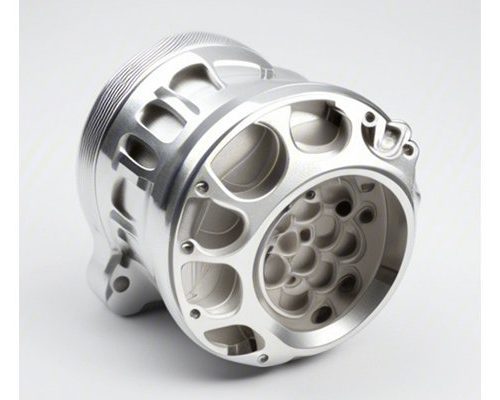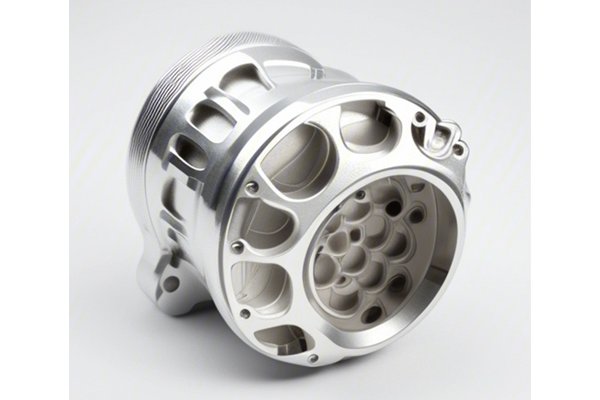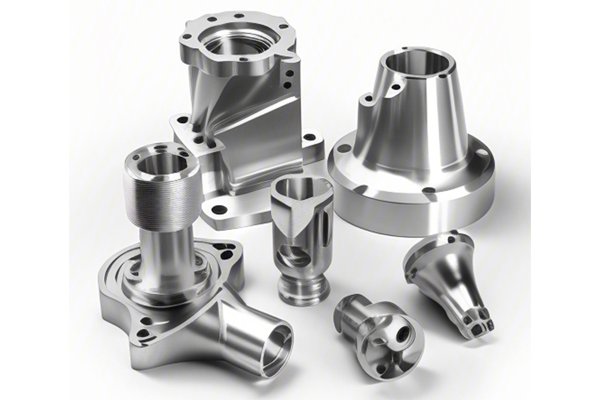Ever found yourself in a situation where you’re trying to visualize how complex parts are made for everything from your smartphone to spacecraft? The bridge between imagination and reality in manufacturing often lies in a technique called CNC machining. Let’s dive into the fascinating world of CNC (Computer Numerical Control) machining, where artistry meets engineering, and discover how this technology can revolutionize manufacturing processes as we know them.
Understanding CNC Machining
CNC machining is like the magician of the manufacturing world. It turns raw materials into a finished product with astonishing precision and efficiency. But what exactly is CNC machining? At its core, it’s a subtractive manufacturing process, meaning it involves removing material from a solid block to create a desired shape. Imagine sculpting a statue from a block of marble; you chip away the excess until you have your masterpiece.
CNC machines operate using a computer program that dictates the movements of cutting tools. These tools are the real stars of the show, executing intricate designs based on CAD (Computer-Aided Design) files. The process has essentially automated what used to take hours or even days, allowing for quicker turnaround times and more complex designs that would have been impossible with traditional methods.
Why CNC Machining?
So, why should you care about CNC machining? Well, for starters, it’s everywhere! From the intricate components of your favorite video game console to the robust parts that make up an airplane, CNC machining plays a pivotal role. Here are some key benefits that make it worthy of your attention:
Unmatched Precision
Isn’t it fascinating that machines can achieve tolerances as tight as a few microns? That’s about the thickness of a human hair! CNC machines excel in delivering consistency and accuracy that manual machining simply cannot match. This precision is crucial in industries where even the slightest flaw can lead to catastrophic failures, like aerospace or medical device manufacturing.
Efficiency and Speed
Want to complete a project in record time? CNC machining is the answer. Once a machine is programmed, it can run around the clock, creating parts one after another like a well-rehearsed choreographed dance. This dramatically reduces lead times, allowing businesses to meet tight deadlines and accelerate their production schedules.
Flexibility in Design
Have you ever heard of the term “endless possibilities”? With CNC machining, it’s fitting. Need a complex part with intricate details? Not a problem! CNC machines can handle a variety of materials including metals, plastics, and composites, and they can create virtually any shape you can dream of—within reason, of course!
The CNC Process: Step-by-Step
Buckle up as we take a little detour through the CNC machining process. Here’s how it typically unfolds:
Designing the Part
Everything starts with an idea! Engineers and designers use CAD software to create detailed 3D models of the part to be manufactured. This is the initial script for the CNC “performance,” and it sets the stage for everything that follows.
Converting to G-code
Once the design is ready, it’s time for the magic to begin. The CAD drawing is transformed into G-code, the language that CNC machines understand. Think of G-code as the script that tells the machine what movements to make, including its speed and the path it should follow.
Setting Up the Machine
Now that the machine has its script, it’s all about preparation. Operators mount the workpiece onto the machine, ensuring it’s securely in place. They also install the necessary cutting tools, which can vary depending on the material and design. It’s similar to preparing your kitchen before whipping up a gourmet meal—everything needs to be just right!
Machining the Part
Here comes the grand performance! The CNC machine follows the G-code meticulously, carving, cutting, and shaping the material into the final design. This stage may include several different processes like milling, turning, and drilling, depending on the complexity of the part.
Finishing Touches
After the machined part emerges from the machine, it might require some finishing work to polish it up. This could involve sanding, grinding, or even anodizing the piece to enhance its durability and appearance. Just like an artist adding the final brushstrokes to a painting, these steps can significantly elevate the quality of the final product.
Quality Inspection
Last but not least, it’s time for quality control. Each part is meticulously inspected to ensure it meets the required specifications. This is where the saying “measure twice, cut once” comes into play. A tiny error can lead to significant issues down the line, so rigorous testing is essential.
Applications of CNC Machining
Now that we’ve demystified the process, let’s explore where CNC machining makes waves across various industries:
Aerospace
In the aerospace sector, precision is non-negotiable. CNC machining creates critical components like turbine blades and structural parts that withstand extreme conditions. These parts must be flawless because they operate in an environment where mistakes can be catastrophic.
Automotive
Cars are more than just a mode of transport; they’re a combination of thousands of components all working together. CNC machining helps manufacture everything from engine parts to intricate designs for the interior, ensuring cars are efficient, reliable, and safe.
Medical Devices
In the medical field, the stakes are extraordinarily high. CNC machining produces custom implants and surgical instruments with precision that is paramount for patient safety. Imagine needing a custom prosthetic—CNC can create it to fit perfectly, improving the quality of life for many.
Consumer Electronics
Smartphones, tablets, and laptops all feature parts that have undergone CNC machining. The sleek designs and intricate components are essential to the functionality and aesthetics of modern technology, making CNC machining an unsung hero of the industry.
Challenges in CNC Machining
While CNC machining sounds like the perfect solution, it does come with its own set of challenges. Here are a few that manufacturers often face:
Initial Setup Costs
Investing in CNC machinery can be quite a hefty burden. The machines themselves can cost anywhere from a few thousand to several hundred thousand dollars. However, when you consider the long-term benefits, it’s viewed as a worthy investment.
Skilled Operators Needed
CNC machining isn’t just a ‘set it and forget it’ type of deal. Skilled operators are essential for programming and operating CNC machines efficiently. The demand for skilled labor means businesses have to invest in training, which takes time and resources.
Maintenance and Downtime
Like any machinery, CNC machines require regular maintenance to keep them running smoothly. Neglecting this can lead to unexpected breakdowns, causing costly downtime in production. It’s crucial to stay ahead by implementing a regular maintenance schedule to minimize disruptions.
The Future of CNC Machining
What does the future hold for CNC machining? Spoiler alert: it’s looking brighter than ever!
Increased Automation
As technology advances, we can expect to see even greater automation in CNC machining processes. This will enhance efficiency and reduce the potential for human error, taking precision to new heights.
Integration With AI and IoT
The integration of Artificial Intelligence (AI) and the Internet of Things (IoT) is also on the rise. Imagine a CNC machine that can analyze its performance and make adjustments on its own, or one that communicates with other machines in real-time to optimize the entire production process.
Sustainability Initiatives
With a growing emphasis on sustainability, the industry is exploring ways to reduce waste and energy consumption in CNC processes. More efficient materials and methods can lead to reduced environmental impacts, which is crucial for the planet and future generations.
Conclusion: The Takeaway
In summary, CNC machining is a powerful tool that marries precision with efficiency, paving the way for innovation across various industries. Whether you’re in aerospace, medical, or automotive manufacturing, CNC machining has the ability to streamline production processes and enhance product quality.
As you dive deeper into your exploration of CNC machining, consider how it reflects our ever-evolving technological landscape. The artistry of creating complex parts intertwined with the science of engineering makes CNC machining a true marvel. So, the next time you marvel at a gadget or part, remember that it might just be a little piece of CNC magic at work!
Are you ready to harness the power of CNC machining in your next project? Whether you’re a hobbyist, a business owner, or simply a curious soul, the world of CNC machining is waiting for you to explore its endless possibilities.



